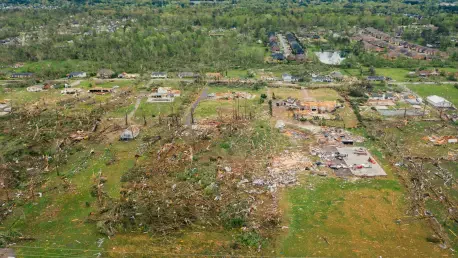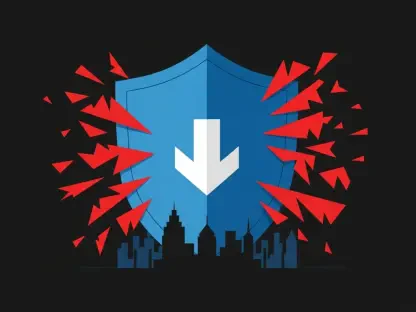In a startling revelation about the escalating dangers of natural hazards, Munich Re Specialty, a prominent reinsurer, has raised a critical alarm over the growing threat of hailstorms across the United States, pinpointing them as a leading cause of property damage with an annual cost estimated at a staggering $10 billion. These severe weather events, often overshadowed by more dramatic perils like hurricanes or tornadoes, are now recognized as the most expensive sub-peril of convective storms, impacting homes, businesses, and vehicles with unrelenting force. The financial toll is compounded by rising repair costs and the increasing frequency of such events, making this a pressing issue for insurers, property owners, and policymakers alike. Through the expertise of meteorologist and catastrophe analyst Bryan Wood, Munich Re sheds light on the intricate dynamics of hail, from its formation to its devastating impact. This article explores the economic burden, regional vulnerabilities, destructive mechanisms, innovative research, and actionable strategies to mitigate this billion-dollar risk.
Economic Burden of a Silent Peril
Hailstorms have quietly emerged as a dominant force in the realm of weather-related insurance claims, accounting for between 50% and 80% of losses tied to thunderstorms, far surpassing the financial impact of tornadoes or high winds. According to Bryan Wood of Munich Re Specialty, the economic strain has intensified due to an 18% increase in roofing material costs over the past few years, driving up the expense of repairs for damaged properties. This surge in costs adds a heavy burden on both homeowners and the insurance industry, as billions are spent annually to address the aftermath of these events. The sheer scale of the problem demands a reevaluation of how risks are managed, pushing for better forecasting and preparation to curb the mounting losses that affect countless communities.
Beyond the raw numbers, the ripple effects of hail damage touch every corner of the economy, from individual households facing unexpected repair bills to insurers grappling with an unprecedented volume of claims. Munich Re Specialty underscores that understanding this financial impact is not just about tallying damages but about recognizing hail as a pervasive threat that requires immediate and sustained attention. The urgency lies in developing mechanisms to lessen the economic blow, whether through enhanced building standards or more robust insurance products tailored to this specific hazard. Without such measures, the cycle of destruction and costly recovery will only deepen, straining resources and resilience across the board.
High-Risk Zones Under Siege
Certain regions of the United States stand as battlegrounds for hailstorms, with Texas holding the unfortunate distinction of being the most affected state due to its prime location in a meteorological hotspot known as “Hail Alley.” This corridor, which also includes Kansas, Oklahoma, Nebraska, and Missouri, experiences frequent and severe hail events that relentlessly challenge property owners and insurers. The unique atmospheric conditions in these areas create a perfect storm for hail formation, resulting in consistent damage to roofs, vehicles, and infrastructure. Munich Re Specialty highlights the critical need for heightened awareness in these vulnerable zones, where the risk is not a matter of if, but when, the next storm will strike.
Tailoring strategies to these high-risk areas is paramount to reducing the devastating impact of hail. Property owners in “Hail Alley” must prioritize protective measures, while insurers need to focus on localized risk assessments to better support affected communities. Munich Re Specialty advocates for region-specific education campaigns to inform residents about the looming dangers and practical steps they can take to safeguard their assets. As hail events grow in intensity and frequency, the focus on these geographic hotspots becomes a cornerstone of broader efforts to build resilience, ensuring that those most at risk are not left unprepared in the face of nature’s fury.
Unpacking the Forces of Destruction
The destructive power of hail extends far beyond mere size, though the record of a 6.42-inch hailstone recorded in Texas a few years ago serves as a chilling reminder of their potential magnitude. Munich Re Specialty explains that damage is also heavily influenced by the density of hailstones and the speed of accompanying winds, which can turn even smaller stones into devastating projectiles. In rare but catastrophic instances, hail the size of baseballs or softballs can puncture roofs, leading to extensive structural and interior damage that often costs thousands to repair. This complex interplay of factors makes hail a uniquely unpredictable threat that demands a deeper understanding to mitigate effectively.
Recognizing these variables is essential for both property owners and the insurance industry in preparing for the worst-case scenarios that hail can bring. Munich Re Specialty stresses that it’s not just about bracing for the largest stones but anticipating the combined effects of density and wind-driven impacts that amplify destruction. Homeowners are urged to consider the broader implications of such events, from shattered windows to compromised building integrity, when assessing their vulnerability. This nuanced perspective on hail’s destructive mechanisms underscores the importance of comprehensive risk planning to address a hazard that defies simple categorization or prediction.
Pioneering Solutions Through Research
At the forefront of combating the hail threat is groundbreaking scientific exploration, exemplified by Project ICECHIP, heralded as the most extensive hail research study ever undertaken. Supported by the US National Science Foundation, this six-week initiative united over 100 researchers from around the globe to dissect the lifecycle of hail, from its formation in storm clouds to its damaging impact on the ground. Utilizing cutting-edge tools like mobile radars and simulated hailstones, the project recorded astonishing wind speeds of up to 160 miles per hour within storm updrafts, offering unprecedented insights into the conditions that spawn these destructive phenomena. Munich Re Specialty, with contributions from Bryan Wood, views such research as a vital step toward crafting effective defenses.
The findings from Project ICECHIP go beyond theoretical knowledge, providing practical data that can shape real-world solutions, including the collection of over 10,000 hailstones for analysis and rigorous testing of roofing materials for durability under extreme conditions. These efforts aim to inform better building practices and protective technologies that can withstand hail’s brutal force. Munich Re Specialty emphasizes the transformative potential of this research, noting that it equips the industry with the tools to anticipate and counteract hail damage more effectively. As studies like these continue to evolve, they pave the way for innovations that could significantly reduce the billion-dollar losses tied to this persistent natural hazard.
Building Resilience Through Practical Measures
Mitigation and public awareness stand as critical pillars in the fight against hail’s devastating effects, with Munich Re Specialty advocating for actionable steps that property owners can take to protect their assets. Simple yet effective measures, such as installing storm shutters or awnings to shield windows, parking vehicles in garages or carports during severe weather, and even using inflatable car covers designed to deflect hail, can make a substantial difference. Additionally, maintaining roofs to prevent age-related vulnerabilities is highlighted as a key strategy, as older structures are far more susceptible to damage from hail impacts. These practical solutions offer a frontline defense against a peril that spares no one in its path.
Collaboration with organizations like the Insurance Institute for Business and Home Safety (IBHS) further bolsters these efforts, as Munich Re Specialty supports real-world testing of roofing materials at specialized facilities across diverse climates. These “roof farms” assess how materials age and perform under hail stress, providing invaluable data to improve building standards. By combining hands-on research with educational outreach, the industry aims to empower communities to adopt resilient practices. Munich Re Specialty’s commitment to fostering such partnerships reflects a broader vision of reducing hail’s economic toll through informed, proactive measures that prioritize long-term safety and stability.
Charting a Path Forward After the Storm
Looking back, the insights provided by Munich Re Specialty paint a sobering picture of hail as a relentless and costly natural hazard that demands urgent attention across multiple sectors. The staggering $10 billion annual damage figure serves as a stark reminder of the scale of the challenge, while regional vulnerabilities in areas like “Hail Alley” underscore the need for targeted interventions. Research initiatives such as Project ICECHIP illuminate the complex dynamics of hail, offering a foundation for innovative solutions that could lessen its destructive grip.
Moving ahead, the focus must shift to translating these findings into widespread action, with an emphasis on strengthening building codes, enhancing insurance offerings, and scaling up public education campaigns to equip individuals with the knowledge to protect their properties. Munich Re Specialty’s leadership in this space, through partnerships and thought leadership, sets a precedent for how the industry can unite to tackle such pervasive risks. The path forward lies in sustained investment in resilience, ensuring that communities are not only prepared for the next hailstorm but also capable of recovering swiftly and effectively from its aftermath.









